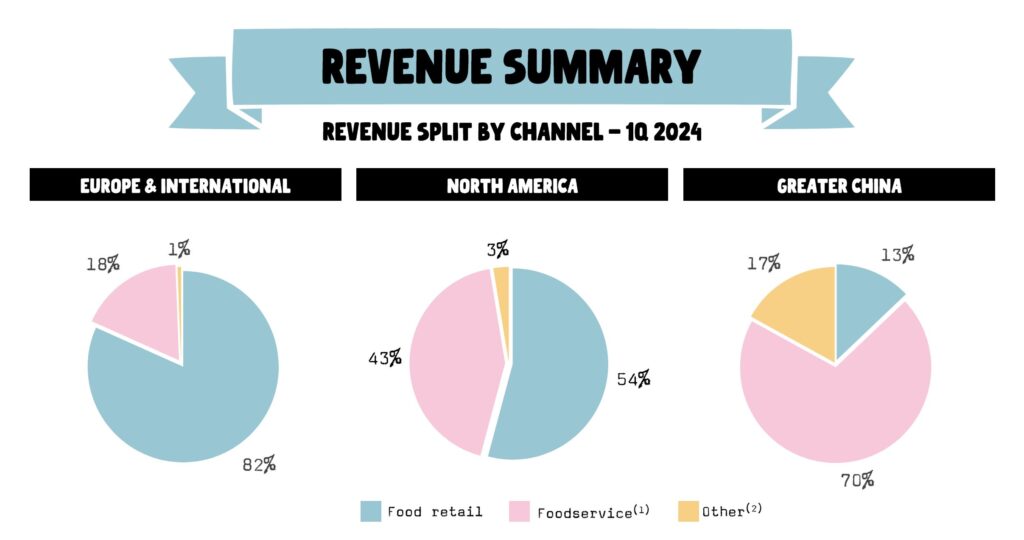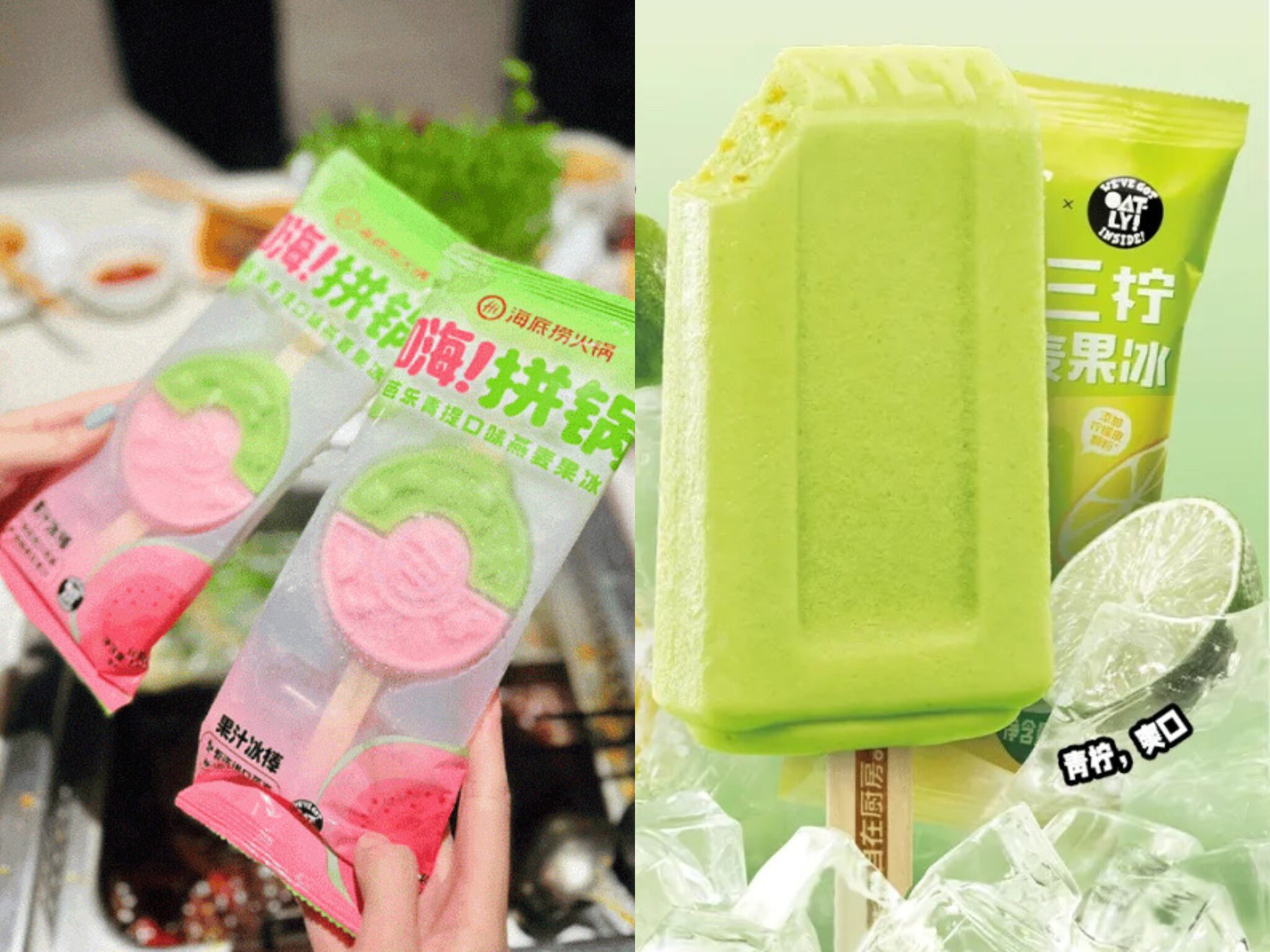5 Mins Read
Oatly has launched three ice creams via partnerships with Haidilao and KFC in China, where it has initiated a strategic reset this year.
Swedish oat milk giant Oatly has partnered with hotpot giant Haidilao and fast-casual chain KFC to introduce new vegan popsicles to the restaurants’ menus in China.
At Haidilao, the world’s largest hotpot chain, Oatly has introduced two fruit popsicles in guava and grape flavours. The eatery is one of the five most valuable brands internationally. Among the only companies surpassing it is KFC, which has extended an ongoing partnership with Oatly to offer a limited-edition citrus-flavoured ice lolly.
It follows the rollout of a range of zero-sugar oat milk ice creams in the market to cater to an increasingly health-conscious population.
Oatly hones in on health amid China reset

At Haidilao, the oat-based fruit popsicles were specifically designed to complement hot pots, providing a cooling sensation to the often spicy and always piping-hot dish. The treats blend Oatly’s milk with fresh fruits, resulting in a creamy, sweet and sour offering that counterbalances the meal.
Meanwhile, Oatly’s KFC popsicle is called Bursting Citrus Trio, and features a blend of three different kinds of lemons, whose tanginess is offset by malt paste and maltose syrup. The zesty treats also contain crunchy bits of frozen candied lemon peel.
This comes months after Oatly rolled out zero-sugar treats in latte, cocoa and hazelnut variants, speaking to a growing demand for healthier plant-based foods in China. A 2023 report by Asymmetrics Research outlined how plant-based milk brands are highlighting attributes like ‘no sugar/cholesterol/trans fat’, ‘good for brains/eyes’, and ‘high protein/calcium’ on product packaging, alongside cleaner labels.

“China is promoting healthier and more nutritious food options in response to the Healthy China policy,” said David J Ettinger, chief representative officer at law firm Keller and Heckman Shanghai. “Therefore, foods offering health benefits and high nutritional value are going to likely lead the way.”
Health is the main driver of plant-based food consumption in China, with 46% of consumers saying so in a poll published last month. This was followed by nutrition (39%). Freshness of ingredients, meanwhile, is the biggest barrier, cited by 36% of respondents, so this focus by Oatly will likely be popular with shoppers.
The partnerships with Haidilao and KFC will help Oatly, which first introduced ice cream in China in 2022, turn its fortunes around in the country. Sales have been on the decline for a while now, with the oat milk maker blaming a “slower-than-expected post-Covid-19 recovery”.
Last year, its Asian revenue decreased by 19% – China made up 93% of the market. “The consumer environment in Greater China remains challenging. However, we are identifying opportunities to rebuild our business in a disciplined manner,” COO Daniel Ordonez said in May.
“While it is clear we have not yet gained the traction needed for this business to capture the full opportunity that region provides, you can see we’re starting to make progress on the second stage of this segment’s turnaround plan,” he added.
Spotlighting culture and functionality for Chinese consumers

As part of its strategic reset in China, Oatly rejigged its operating segments this year, with Greater China (including Hong Kong and Taiwan) now managed separately from Asia-Pacific, which has joined Latin America, Europe, Middle East and Africa in a new Europe & International section.
Ordonez’s statements came during the company’s Q1 earnings call this year. The Greater China region made up 11% of the business’s sales in the quarter, and year-on-year revenue was down by 27%. Oatly had already begun eliminating low-margin SKUs from retail and e-commerce, and now, the foodservice focus has been amped up.
The latter channel accounted for 70% of the brand’s Q1 revenue in Greater China, while e-commerce contributed to 13% – it represents the need for a different strategy in this region, given that retail dominated revenue in its other markets.
“Sensitive to the economic context prevailing in China and the new consumer behaviour, it was clear we needed to complement our portfolio with SKUs that could hit certain price points,” Ordonez said. “This helps us to build a stronger service package for our customers, drive volume growth to sustain necessary levels of capacity absorption, and hence, solidify our margins.”

Reflecting on Oatly’s journey in China and its future strategy, its Greater China president David Zhang told Campaign Asia last month that “categories serve as forests, brands act as trees, and business represents the fruit”. “Initially, there’s a forest, followed by trees, and ultimately, fruit. Without a forest, the trees would be swept away by the wind. Only when a category is established can a brand genuinely exist,” he explained.
Zhang highlighted the importance of understanding cultural differences and values in the CPG sector. “We’ve discovered that numerous Nordic concepts are compatible with fundamental human logic, such as ‘less is more’, ‘lagom’ (Swedish for ‘just right’), and ‘sustainable development’. These concepts are also relevant in China,” he said.
“In China, Oatly not only highlights the functionality of its products but also chooses to use them to represent a lifestyle. We discuss the Nordic way of life and position environmental protection and sustainability as our distinctive attributes, together with the importance of design and creativity as our primary focus, to showcase our unique strengths and qualities.”
Zhang added that the demand for oat milk has been constantly on the rise in China. “The challenge of shifting from a ‘niche’ to ‘daily’ means increasing the consumer base and its diverse needs,” he stated. “At the same time, it is an opportunity for Oatly to maintain keen market insights and create R&D capabilities to meet the diversified needs of the general public for oat-based products.”



